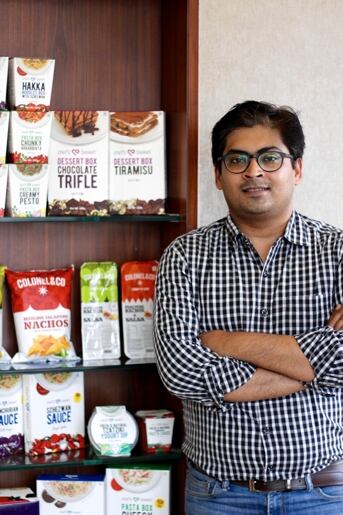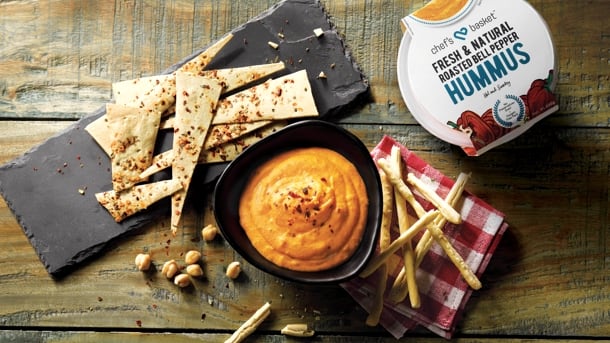Having travelled with their work across Asia at a time when modern Indian retail was just beginning to gain a foothold, the trio were used to the ubiquitous convenience stores in cities like Bangkok, Hong Kong and Taipei.

Things were also beginning to change on home turf, in Mumbai, albeit from a different starting point. Here, the equivalent of 7Eleven had barely evolved from the age-old mom-and-pop kirana format, which typically stocks individual ingredients, often in bulk. Convenience formats beyond nascent supermarkets had not yet arrived, but the boys saw it coming.
“This was a big, big opportunity opening up in India,” says Varun Jhawar, co-founder of Fizzy Food Labs, and IIT-Bombay and Procter & Gamble alumnus. “People were beginning to change.”
In 2012 the market was starting to open up for consumer packaged goods, and with co-founders Nipun Katyal and Manish Tirthani, Jhawar decided that convenience would be central to this process.
Understanding that modern retail would only grow from this point, the partners realised they would have to “skip a few levels of value addition” if their start-up were to challenge big food manufacturers and find shelf-space. They needed to devise a format that would immediately meet the Indian consumer’s need for convenience, which would withstand competition when it finally arrived.
“We understood that competition from convenience formats was going to come in. We decided that we were going to work towards emerging formats. We wanted to focus on format innovation: something that makes consumption more frequent was the objective.”
At about the same time, e-commerce was coming alive in India, with homegrown start-up Flipkart leading the way. Modern retail was starting to take off, and consumers were slowly getting more access to world foods.
More often than not, well-heeled Mumbaikers of Jhawar’s age group were eating out on pad thai or pizza, he says. The frequency of out-of-home Indian cuisine consumption was actually decreasing as growing numbers of restaurants that offered international cuisine opened up in India's commercial capital.
This new internationalism, and a realisation that catering to local tastes in a country where recipes might change every 50km could hinder their goal of pan-Indian distribution, led Jhawar and his partners to narrow their focus to world foods.
“So instead of trying to change consumer perception of local dishes, we decided to look at the aspirational side of things and pick up on a desire for these new, in-demand cuisines,” he explains. They then locked onto the idea of individual portion packaging to make their products more affordable.
Portion control was not new to Indian FMCG retail, where consumers had been buying, say, one-rupee sachets of shampoo for a generation. The entrepreneurs now wanted to apply the same fundamentals of fixed portion packaging to fresh world foods: by doing so they could put together their products more cost-effectively by assembling the required quantities of each ingredient into a single pack, which the consumer would then cook at home.
“We got infrastructure available for our vendors so we could create something that would meet a family’s requirement for two or three people’s consumption. With that our first brand, Chef’s Basket, was born,” Jhawar recalls.
Five years later, Chef’s Basket now boasts more than two dozen individually packaged meal kits with fresh, natural ingredients, spanning pasta, pizza and oriental foods, sauces and desserts.
Available at “all supermarkets across India, from D-Mart to Walmart”, the brand’s packaging wouldn’t look out of place at a Sainsbury’s in London. This is perhaps due to the fact that a British company won a crowdsourcing contract to design the patented packs.
Fizzy Food Labs devises the recipes and outsources the supply of ingredients to food manufacturers. The meals are then packaged at the start-up's warehouse and shipped to retailers.

This supply chain, which cuts out distributors and prevents mark-up shelf-pricing, allows the company to keep costs down to market “fresh, wholesome pasta dishes for less than 100 rupees a portion”. This, in turn, has attracted supermarkets looking to differentiate their product offerings to the start-up’s cause.
In a country famous for its appreciation of home-cooked meals, Jhawar insists that Chef’s Basket taps into a long tradition of family cooking habits.
He says: “From day one we had a firm understanding that the Indian consumer had a bias towards home cooking. But our format gives consumers the convenience to identify the best quality ingredients, in a portion pack at an affordable price.
“This customisation drives the brand. When someone buys a pack of basmati rice and takes it home to cook, they think it is fresh. Similarly cooking a pasta is a staple for Italians. Out product takes consumers to the same level of thinking: getting them to cook fresh ingredients from a pack at home.”
Having secured millions of dollars of funding—one round in 2015 raised US$6m from the likes of SAIF Partners and and Haresh Chawla, partner at India Fund Advisors—it appears that the graduates’ idea has sparked the interest of investors, as well as the market.
Their venture is also a clear example of the symbiotic relationship packaged food companies have with the growth of modern retail. In other, more mature markets this is taken for granted by consumers, like those in Taiwan who are accustomed to nipping into a 7Eleven for a packaged meal. In India, though, this is just the tip of the iceberg, and the competitors Jhawar and his friends had predicted are now circling for their own share of the market.
